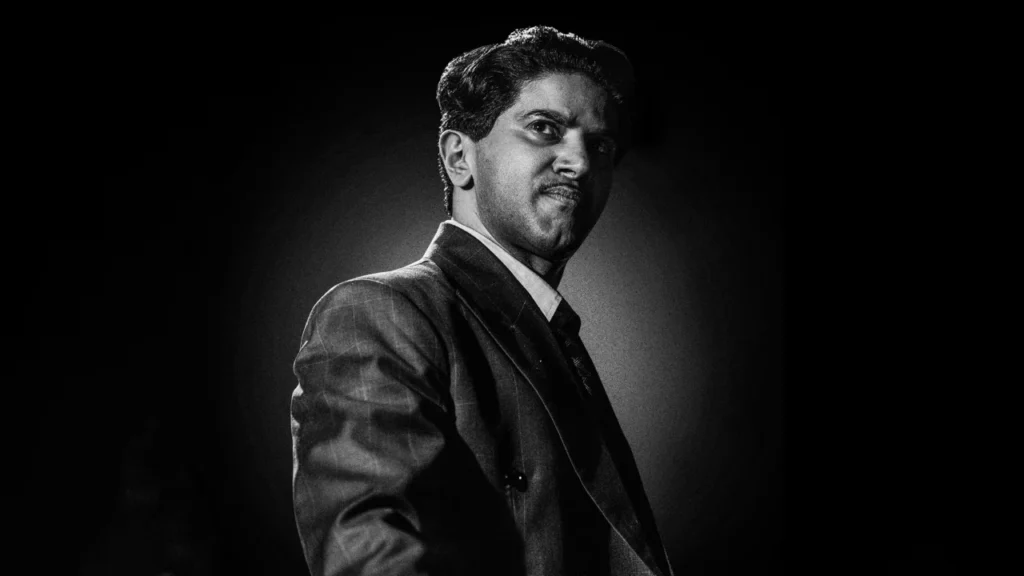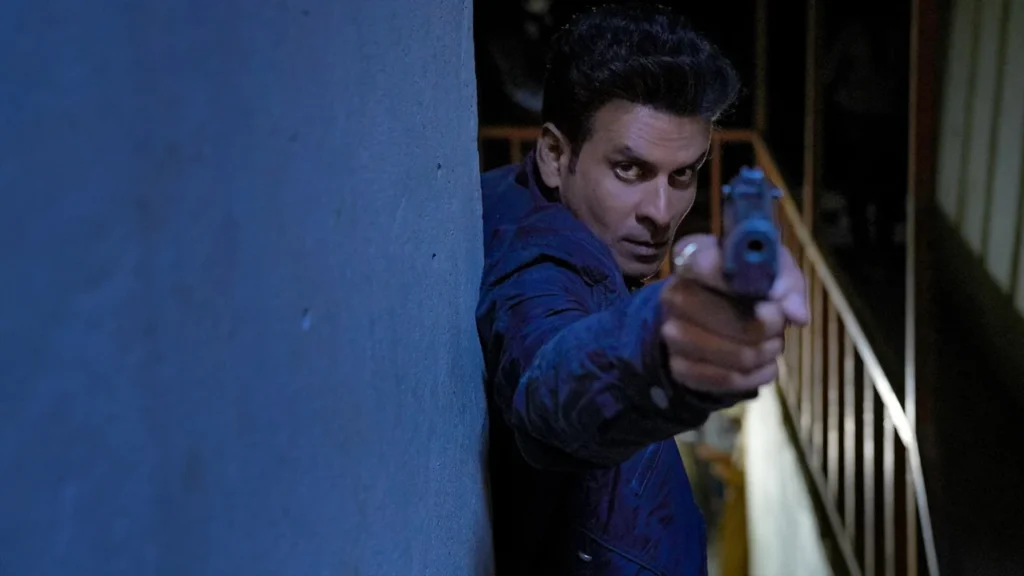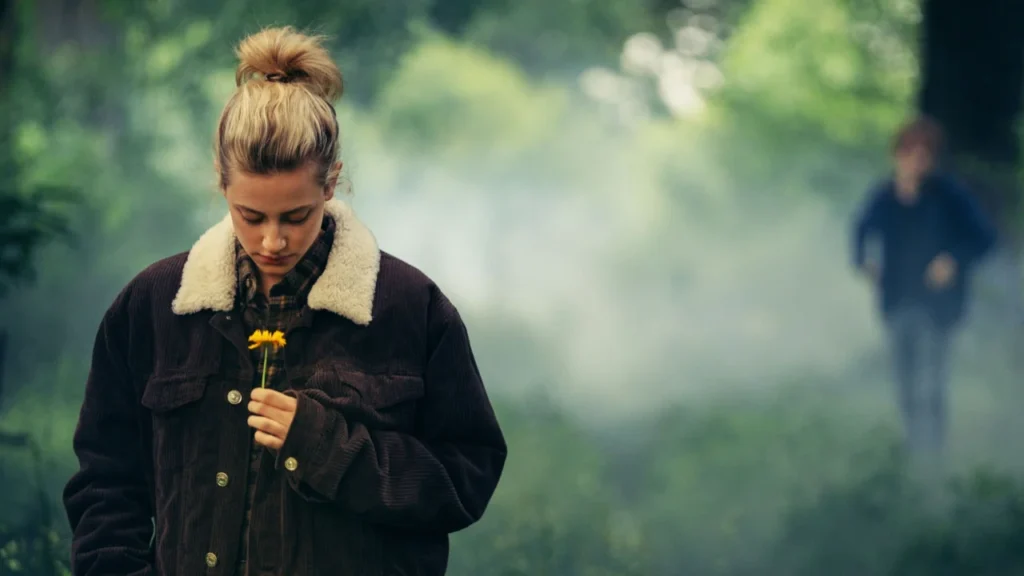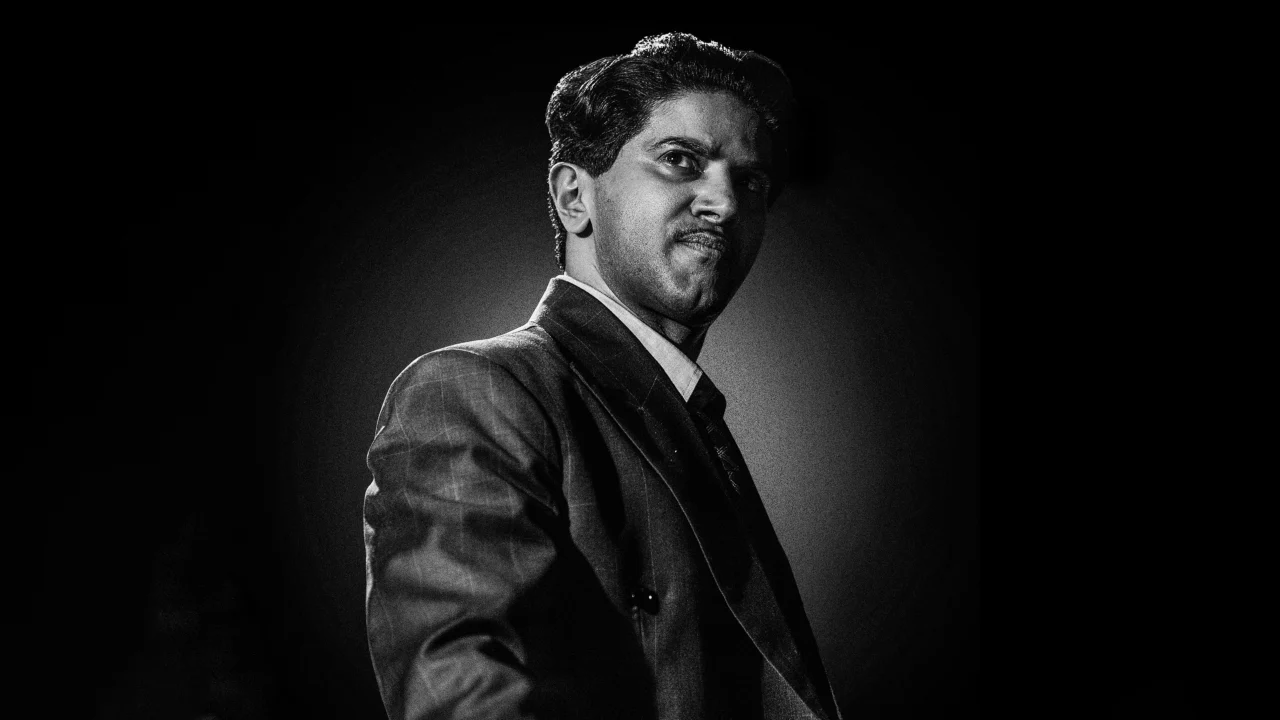
Kaantha (2025) Movie Review ft. Dulquer, Bhagyashri, and Samuthirakani
Kaantha arrived in theaters on November 14, 2025, taking viewers back to the world of 1950s Madras cinema. Selvamani Selvaraj directs this period drama starring Dulquer Salmaan as TK Mahadevan, a superstar actor, and Samuthirakani as Ayya, the director who created him.
The film runs 163 minutes and tries to mix character drama with murder mystery. It shows the behind-the-scenes world of Tamil cinema when egos clashed as loudly as the stars shone on screen.

The Story
The core of Kaantha is simple: a mentor loses his student to fame. Ayya found Mahadevan when he was nobody and turned him into one of Tamil cinema’s biggest names. But success breeds independence, and Mahadevan no longer wants to live under his mentor’s shadow.
Their rift becomes a war when they reunite for a new project. Ayya wants to make Shaantha, a film about his mother. Mahadevan hijacks it, changes the title to Kaantha, and starts directing scenes himself. Kumari, the newcomer Ayya discovered, becomes another battleground as she respects the director but falls for the actor.
Their rivalry peaks during the climax shoot of the film-within-the-film. Then a real bullet fires, and someone dies. The second half shifts completely as Phoenix investigates who pulled the trigger and why, turning the drama into a whodunit.
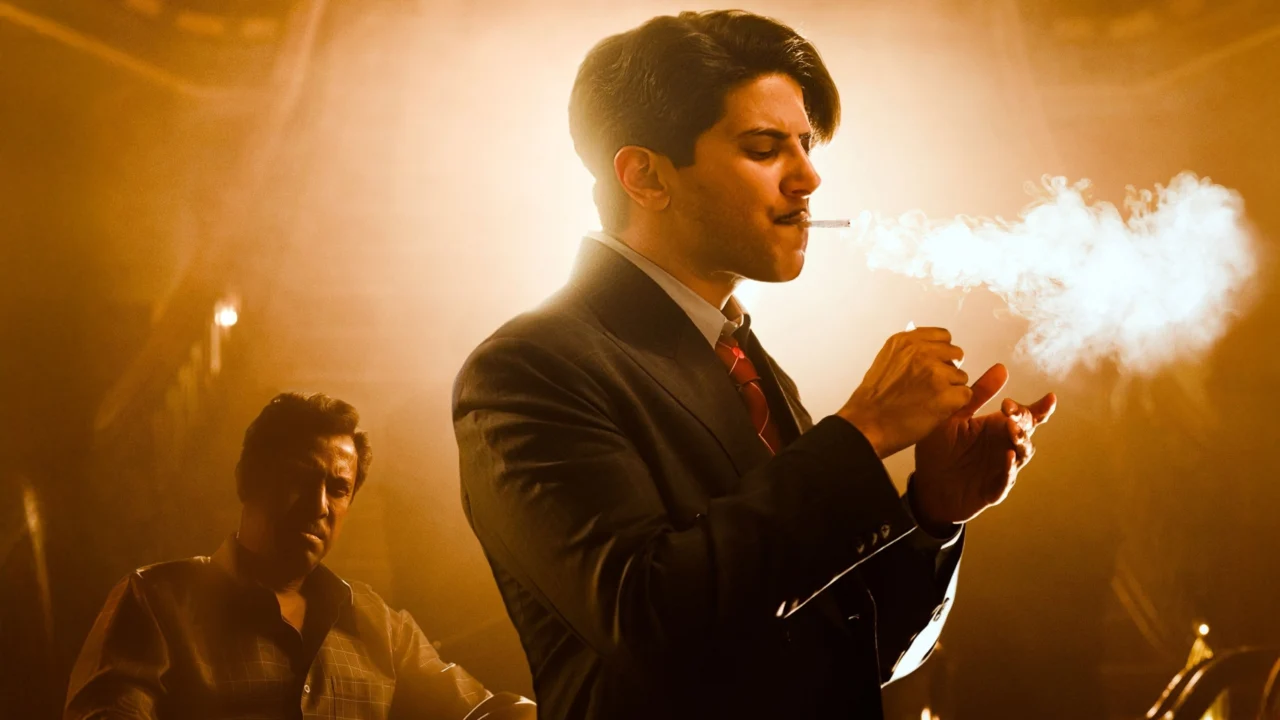
How The Cast Performed
Dulquer Salmaan delivers what I’d call his finest work to date. He doesn’t just play a 1950s superstar; he becomes one. Watch him switch between the theatrical style old cinema required and the natural emotions his character feels off-camera. The way he captures insecurity behind public charm is remarkable.
Those mirror scenes hit hard. You see a man confronting what he’s become, trapped by his own image. In one breakdown scene, his performance is so raw it drew applause in my theater. This is the kind of acting that reminds you why cinema matters.
Samuthirakani stands toe-to-toe with him as Ayya. He brings controlled fury to a director who thinks he owns his protégé’s career. Even his silence carries weight. The scenes where these two clash, with years of resentment finally exploding, form the emotional backbone of the film.
Bhagyashri Borse impresses in her Tamil debut. She gets actual substance here, not just decoration. Kumari feels like a real woman from that era, someone with dreams who realizes she’s being used in a power game between two men. Her graceful presence and emotional depth prove she can handle serious roles.
Rana Daggubati brings quirky energy as Phoenix. His investigator character entertains, though his style sometimes feels too loud for this otherwise grounded drama. While I enjoyed his performance, it creates a tonal mismatch with the rest of the film.

What Works Well
The technical execution here is top-notch. Cinematographer Dani Sanchez-Lopez creates stunning visuals throughout. His use of lighting and shadows builds a film noir atmosphere that pulls you into 1950s Madras. The black-and-white sequences showing the movie-within-the-movie look authentic to that period.
The production design deserves major praise. Every detail feels right, from studio sets to costumes to how scenes are staged. You genuinely feel transported seven decades back. The recreation of old film studios, with heavy cameras and dramatic setups, adds real authenticity.
The first half grabs you. Watching Ayya and Mahadevan battle for control, using Kumari and the film as weapons, kept me hooked. The writing shows how mutual respect curdles into bitter rivalry. Some scenes blur what’s performance and what’s genuine emotion, adding complexity.
Jakes Bejoy’s background score elevates key moments, especially in the second half where pacing dips. The music adds tension and emotion where the script alone might not sustain interest. The climax, particularly the mirror confrontation, delivers emotional payoff after all that buildup.
Where It Stumbles
Pacing becomes problematic after intermission. The film loses steam when the murder mystery takes over. Several investigation scenes cover similar ground without adding new information. At 163 minutes, it definitely overstays its welcome.
The tonal shift from character study to detective procedural feels jarring. What starts as an intimate exploration of ego and ambition becomes a methodical investigation. I missed the emotional depth of the first half. The mystery itself is fairly predictable. Once the investigation starts, the resolution becomes obvious.
Some songs disrupt the flow. “Pasi Manase” sounds too contemporary for a 1950s setting, breaking the carefully maintained atmosphere. The romance between Mahadevan and Kumari doesn’t create enough emotional investment. It feels like a subplot rather than something central.
Rana’s character, while entertaining, introduces a somewhat cartoonish element to an otherwise serious film. His exaggerated style belongs in a different movie. The second half needed tighter editing and stronger writing to match the first half’s quality.
What Critics Said
Most reviews landed between 2.5 to 3.5 out of 5. The Times of India gave 4/5, praising the craft while noting predictability. Indian Express, Cinema Express, and Pinkvilla all gave 3/5, highlighting performances but pointing out structural flaws.
OTT Play and 123Telugu gave 2.5-2.75/5, calling out writing gaps and stretched pacing. The common thread: exceptional performances and technical brilliance, but the story doesn’t fully deliver. Critics universally agreed Dulquer gives a career-best performance.
Public response has been divided. Many praised it as an “acting masterclass” and loved the period recreation. Others found it slow and overly long. The first half received more universal appreciation than the investigation-heavy second half.
My Take
Kaantha demands patience, and I think that’s both its strength and weakness. If you appreciate strong acting, gorgeous visuals, and period authenticity, you’ll find plenty to admire. Dulquer truly shines here, and watching him battle Samuthirakani creates genuine tension.
However, I wish the second half had maintained the first half’s energy. The shift to murder mystery, while logical story-wise, disrupts what made the opening portions engaging. The investigation scenes drag when they should drive forward. I found myself checking the time more than once in the second hour.
The technical excellence impressed me consistently. This is beautifully crafted cinema that respects its historical setting. The way they recreated 1950s filmmaking, both the glamour and the chaos, shows real dedication.
Who should watch? Film lovers who value craft over commercial entertainment. People interested in cinema history and how the industry operated decades ago. Anyone wanting to see Dulquer deliver his best work. But if you prefer fast-paced thrillers or need constant momentum, this might test your patience.
Kaantha doesn’t reach masterpiece territory, but it’s a sincere, ambitious effort that brings something fresh to theaters. It’s rare to see Tamil cinema attempt this kind of period authenticity and character complexity. For that alone, it deserves recognition, even with its flaws.
Rating: 3/5

